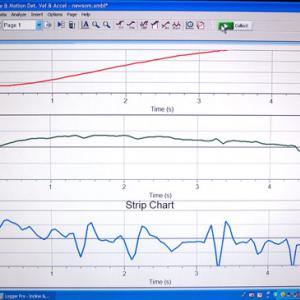College of Liberal Arts & Sciences
1C10.05 - Ultrasonic Detector & Student - Car
Have a student stand in front of the motion sensor and move towards or away from the motion sensor to make the position, velocity, or acceleration graphs desired.
A car or a ball may be used instead of a student.
- Mark W. Kunkel, Kimberly A. Riedl, Douglas F. Stickle, "Acceleration in the City", TPT, Vol. 62, #2, Feb. 2024, p. 108.
- Akira Adachi, "Physics Experiments Using an Automatically Controlled Model Train and Mobile Ultrasonic Sensor for a Smartphone", TPT, Vol. 61, #6, Sept. 2023, p. 489.
- Seerkan Kapucu, "Using Different Smarphone Sensors to Find the Speed of a Toy Car", TPT, Vol. 60, #6, Sept. 2022, p. 430.
- Doug Forrest, Mary Battershell Whalen, "'Cheers for Rates of Change' - An Introductory Lab Used to Relate Graphs to Physical Systems", TPT, Vol. 50, #8, Nov. 2012, p. 461.
- Donna Berry Conner, "Walk-a-Graph, Run-a-Graph", A Potpourri of Physics Teaching Ideas, p. 1.
- Jodi and Roy McCullough, "Velocity with a Constant Motion Car", The Role of Toys in Teaching Physics", p. 3.2.
- Borislaw Bilash II, David Maiullo, "What's Your Slope", A Demo a Day: A Year of Physics Demonstrations, p. 18.
Disclaimer: These demonstrations are provided only for illustrative use by persons affiliated with The University of Iowa and only under the direction of a trained instructor or physicist. The University of Iowa is not responsible for demonstrations performed by those using their own equipment or who choose to use this reference material for their own purpose. The demonstrations included here are within the public domain and can be found in materials contained in libraries, bookstores, and through electronic sources. Performing all or any portion of any of these demonstrations, with or without revisions not depicted here entails inherent risks. These risks include, without limitation, bodily injury (and possibly death), including risks to health that may be temporary or permanent and that may exacerbate a pre-existing medical condition; and property loss or damage. Anyone performing any part of these demonstrations, even with revisions, knowingly and voluntarily assumes all risks associated with them.


